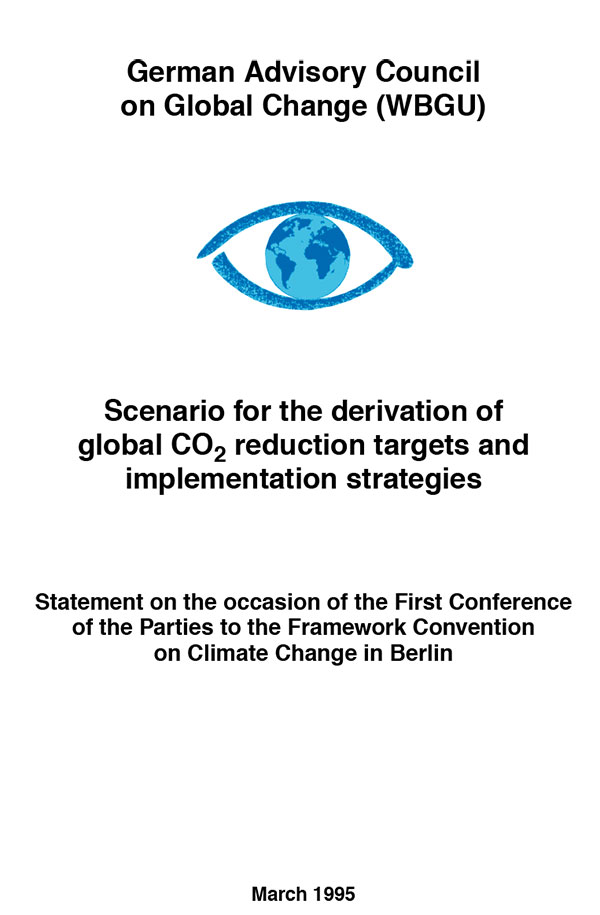
Scenario for the derivation of global CO2-reduction targets and implementation strategies

On the occasion of the First Conference of the Parties to the Framework Convention on Climate Change, the German Advisory Council on Global Change submits the following statement on global CO2 reduction targets and implementation strategies.
Overview
More about this topic
The Council derives a global CO2 reduction target by using an "inverse scenario" based on simplified models for climate dynamics and the carbon cycle. By first analysing the maximum stress levels caused by climate change that one can assume to be ecologically and economically bearable, a "tolerance window" for the future climatic development is deduced. In a further step, the set of admissible emission profiles is determined, i.e. those global CO2 emission functions which keep the climate system within the demarcated window. Among the so-defined family of emission options a specific strategy is finally singled out by feasibility criteria.
The Council believes that such an integrated assessment of the climate change problem in the "backwards mode" has several advantages in comparison with the straightforward approach. It has to be emphasised, however, that the analysis employs a number of assumptions and approximations and therefore has the character of a "Gedankenexperiment".
The conclusions of the scenario are as follows:
- Anthropogenic emissions must be reduced to almost zero over the very long term, i.e. within a period of several centuries. The climate system permits a considerable amount of freedom with respect to how the emission profile is actually shaped, however.
- The current emission patterns could be continued for another 25 years ("Business As Usual"), but this would then demand such drastic reduction measures within only a few years that the structures and technologies capable of producing such levels of abatement are not even remotely conceivable at present.
- The Council therefore believes that an appropriate and feasible emission profile must involve a reduction of global CO2 emissions at a rate of roughly 1% per year over more than 150 years, following a short transitional period (of about 5 years).
- In the medium term, this would require substantial abatement efforts on the part of the industrialised nations. The Council proposes that the measures engendered through Germany's self-imposed commitment to reduce CO2 emissions be implemented in a systematic manner. Internationally the countries have to come to agreements which extend beyond the year 2000.
- One must assume that the reduction commitments imposed on Annex-I countries (the industrialised nations) as a result of the above will be limited in scope. In order to make the anticipated system of rigid national quotas more flexible, the Council recommends that the instrument of joint implementation be put into effect, and that the latter instrument be extended as far as possible to an international certificates system. Deploying these instruments would enable the necessary emission reductions to be achieved in a cost-effective way, and developing countries to obtain rapid access to energy-efficient technologies.
In addition to ongoing improvements in energy efficiency, the Council recommends that measures be implemented in the field of environmental education as a means of achieving the ambitious abatement target, since any "self-sufficiency revolution" is conditional on educational measures.
As the Council's work to date has clearly shown, global environmental problems cannot be viewed in isolation from each other; it is essential instead that interlinkages with other global trends be integrated to a greater extent into analyses and implementation strategies. This also applies to climate change, which can only be coped with if the principle of sustainable development is adhered to.
PDF Downloads
Szenario zur Ableitung globaler CO2-Reduktionsziele und Umsetzungsstrategien
- Download: Vollversion (PDF, 233 KB)
Scenario for the derivation of global CO2-reduction targets and implementation strategies
- Download: Full Version (PDF, 224 KB)